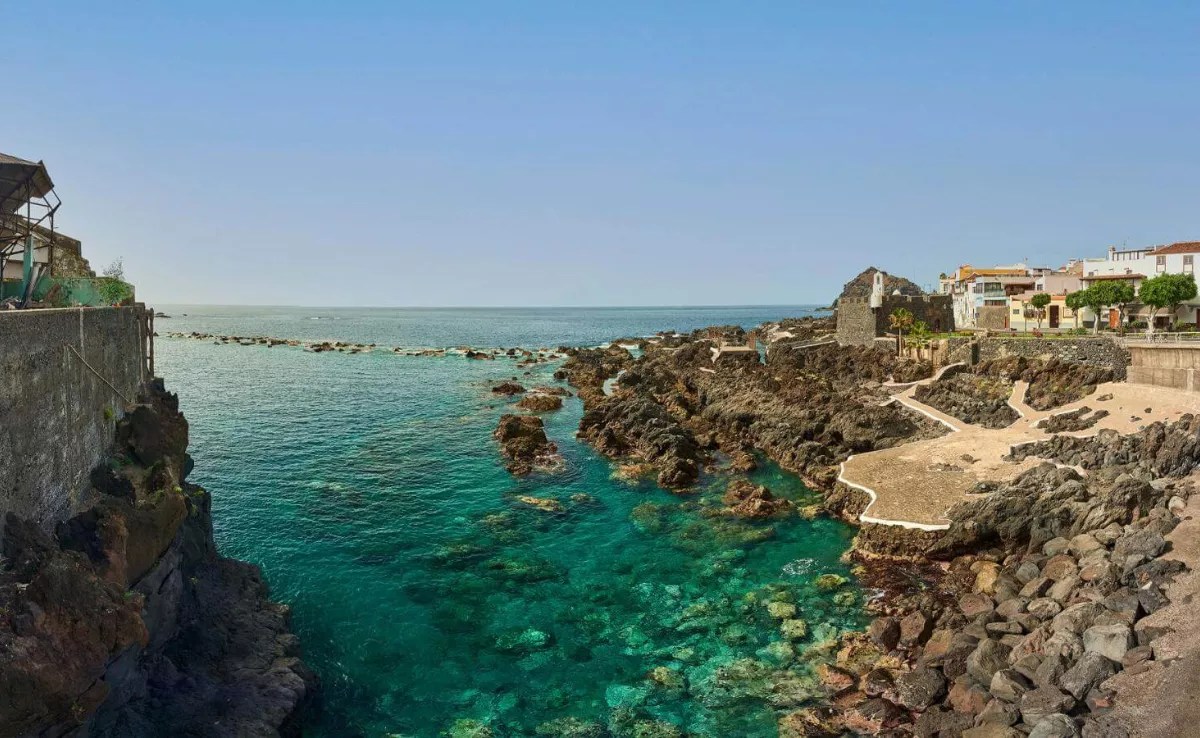Garachico: A Timeless Treasure on Tenerife’s North Coast

A Lasting Legacy
Garachico, located on the northern coast of Tenerife, is a place that seems frozen in time. With its historic centre designated as a Site of Cultural Interest (Bien de Interés Cultural), it combines the beauty of traditional architecture with the dramatic landscape shaped by volcanic activity. Its cobbled streets, grand houses, and the scars from the 1706 eruption have created a municipality that welcomes visitors from around the globe. National Geographic has frequently highlighted the cultural and scenic value of this site, which was awarded the Gold Medal for Merit in the Fine Arts in 1980 due to the richness and preservation of its artistic heritage.
From Prosperous Port to Devastated Village
The origins of Garachico date back to the 15th century, when the Genoese banker Cristóbal de Ponte founded the town, taking advantage of its natural bay to establish it as Tenerife’s main port. From there, shipments of Malmsey wine and sugar cane sailed to Europe and America, generating prosperity that manifested in the form of churches, convents, and palaces that still dot the urban landscape. In this context, social protest also flourished: the Wine Riot of 1666 was a popular uprising against the abuses of English merchants who monopolised trade, marking one of the first economic resistances in the Canary Islands against foreign power.
The Eruption That Changed Everything
On 5th May 1706, the Trevejo or Arenas Negras volcano erupted, spewing lava for 58 days that flowed into the sea. The devastation was immense: Garachico’s port was buried under lava, effectively ending its golden age as a commercial centre of the island. However, from this catastrophe emerged one of its most remarkable attractions: the natural pools of El Caletón, formed by the interaction of lava and the ocean. These interconnected pools are now a coastal leisure space that preserves the geological imprint of the disaster.
A Heritage Rich in History
Strolling through Garachico is like walking through living pages of Tenerife’s history. The Plaza de la Libertad features several architectural landmarks: the modernist kiosk, the Casa-Palacio of the Counts of La Gomera with its dark stone façade, and the parish church of Santa Ana, founded in 1520 and rebuilt after the eruption. Inside, it houses a 16th-century wooden sculpture of Christ of Mercy, crafted by Tarascan artisans. Nearby, the Casa de la Cultura occupies the former Franciscan convent of San Francisco, while the convent of the Immaculate Conception preserves the baking traditions of the nuns, who still make handmade sweets.
The Memory of the Lost Port
Visitors to the Parque de la Puerta de la Tierra can see a stone arch that once belonged to the now-defunct port. This is one of the few remnants that survived the lava and serves as a living memory of that glorious past. Every five years, the town commemorates this chapter with the Lustral Festivals of Christ of Mercy, during which the Fires of the Risco recreate the eruption by launching fireballs from the mountain. Another landmark is San Miguel Castle, built in 1577 to defend the port from pirate attacks. Its square tower of volcanic stone still stands and has been transformed into a Heritage Information Centre, where panels and models tell the local history.
Garachico Today
Visiting Garachico is to discover how a town can rise from tragedy and turn adversity into beauty. Its historic centre, convents, plazas, the refreshment of its natural pools, and the ever-present Roque make it an essential stop for those exploring northern Tenerife. As National Geographic emphasises, few villages in the Canary Islands can boast such a rich blend of heritage, nature, and volcanic memory in such a compact area. Garachico is not just a destination; it is a narrative of resilience and insular identity against the passage of time and the power of nature.















